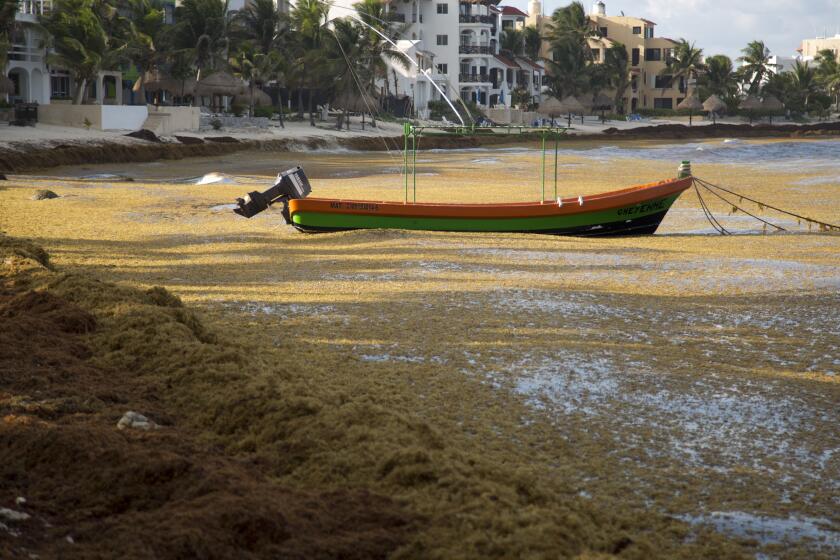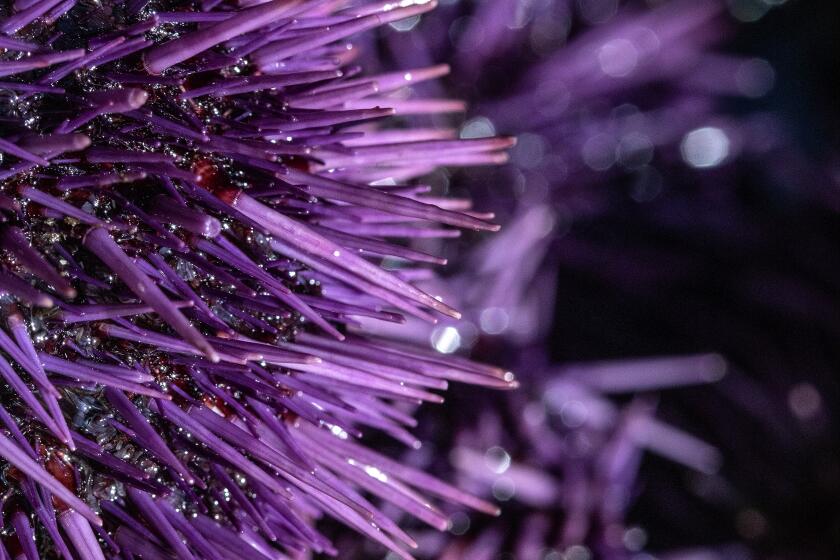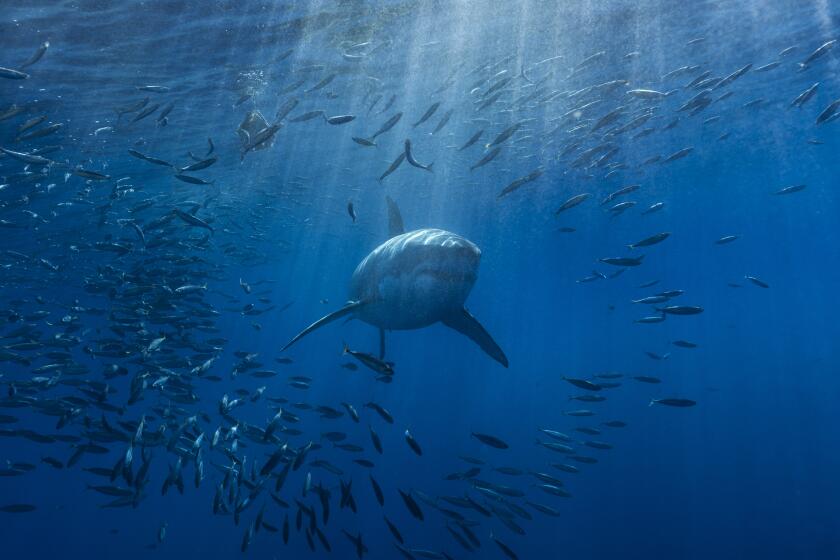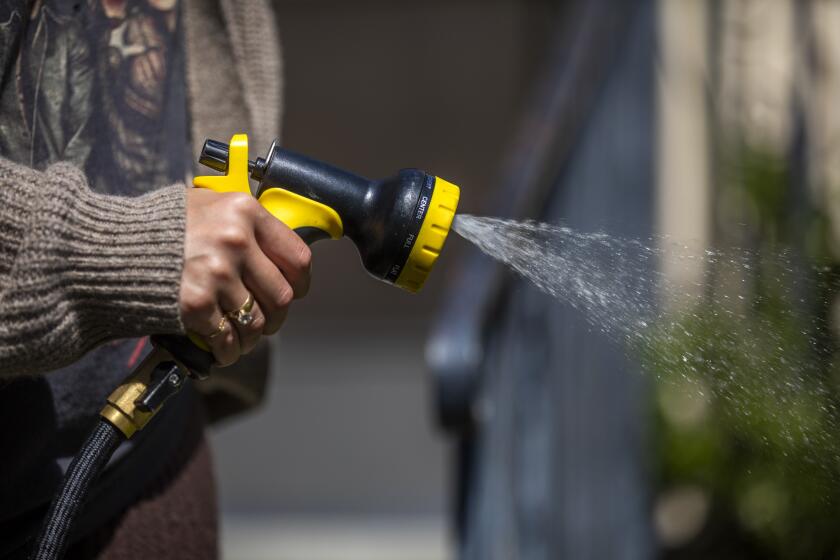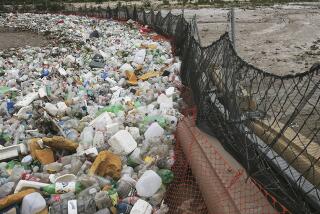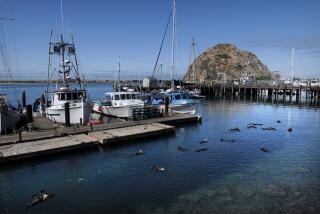Record amount of seaweed chokes Caribbean beaches and shoreline
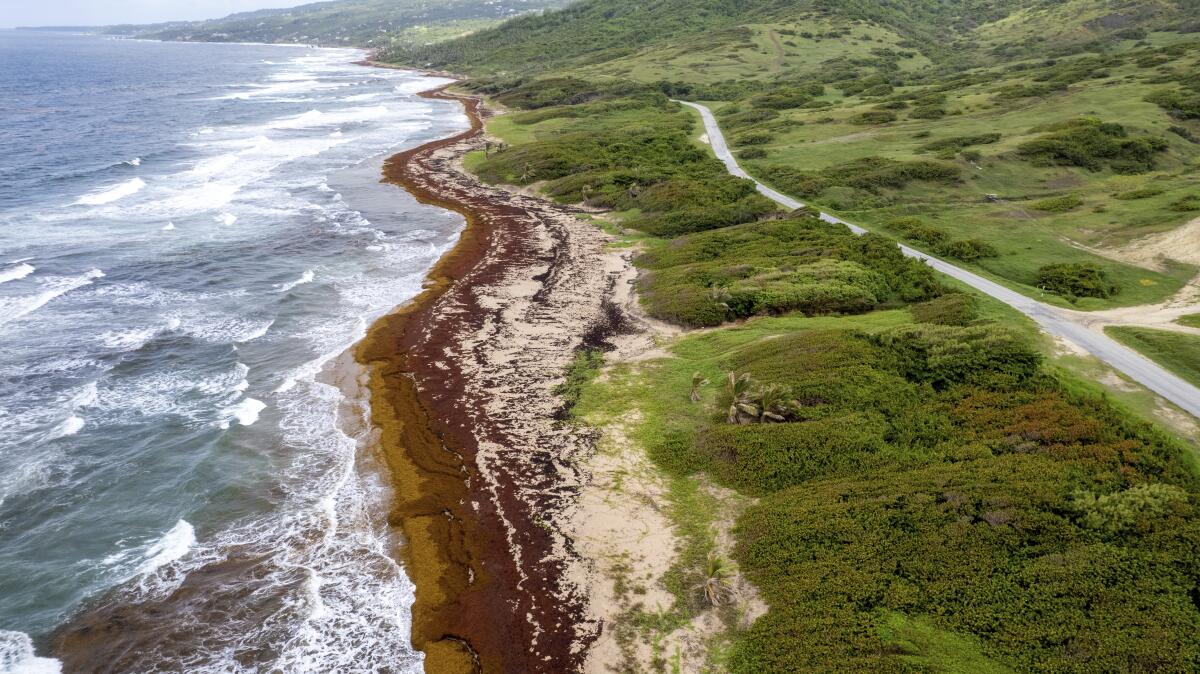
- Share via
SAN JUAN, Puerto Rico — A record amount of seaweed is smothering Caribbean coasts from Puerto Rico to Barbados as tons of brown algae kill wildlife, choke the tourism industry and release toxic gases.
More than 24 million tons of sargassum blanketed the Atlantic in June, up from 18.8 million tons in May, according to a monthly report published by the University of South Florida’s Optical Oceanography Lab, which noted it as “a new historical record.”
July saw no decrease of algae in the Caribbean Sea, said Chuanmin Hu, an optical oceanography professor who helps produce the reports.
“I was scared,” he recalled feeling when he saw the historic number for June. He noted that it was 20% higher than the previous record set in May 2018.
Hu compiled additional data for the Associated Press that showed sargassum levels for the eastern Caribbean at a near record high this year, second only to those reported in July 2018. Levels in the northern Caribbean are at their third-highest, following July 2018 and July 2021, he said.
Scientists say more research is needed to determine why sargassum levels in the region are reaching new highs, but the United Nations’ Caribbean Environment Program says possible factors include a rise in water temperatures as a result of climate change and nitrogen-laden fertilizers and sewage waste fueling algae blooms.
Mexican authorities say the problem of foul-smelling seaweed-like algae on the country’s Caribbean coast beaches is “alarming.”
“This year has been the worst year on record,” said Lisa Krimsky, a researcher and faculty member with Florida Sea Grant and a water resources regional specialized agent at the University of Florida. “It is absolutely devastating for the region.”
She said large masses of seaweed have a severe environmental impact, with decaying algae altering water temperatures and the pH balance as well as leading to declines in seagrass, coral reef and sponge populations.
“They’re essentially being smothered out,” Krimsky said.
The “golden tide” also has hit humans hard.
Long considered a threat to ocean floors, the purple urchin has found salvation by creeping into kitchens in Los Angeles.
The concentration of algae is so heavy in some parts of the eastern Caribbean that the French island of Guadeloupe issued a health alert in late July. It warned some communities about high levels of hydrogen sulfide emanating from huge rotting clumps of seaweed, which can affect people with respiratory problems such as asthma.
The Biden administration declared a federal emergency after the U.S. Virgin Islands warned last month of “unusually high amounts” of sargassum affecting water production at a desalination plant near St. Croix that is struggling to meet demand amid a drought.
“We’re consuming as much as we can produce right now,” said Daryl Jaschen, director of the islands’ emergency management agency. “We’re very concerned about that.”
In addition, the U.S. Virgin Islands’ electricity-generating station relies on ultra-pure water from the desalination plant to reduce emissions monitored by the U.S. Environmental Protection Agency. The loss of such water would force the government to use a type of diesel fuel that is more expensive and in limited supply, officials said.
Toward a more sustainable California
Get Boiling Point, our newsletter exploring climate change, energy and the environment, and become part of the conversation — and the solution.
You may occasionally receive promotional content from the Los Angeles Times.
Experts first noted large amounts of sargassum in the Caribbean Sea in 2011, which Hu and other scientists think were created by stronger-than-normal winds and currents. The problem has worsened as clumps multiplied, fueled by nutrients and strong sunlight.
“In the tropical Atlantic, everything was right,” Hu said. “Everything grows fast.”
Sargassum in moderation helps purify water, absorb carbon dioxide and is a key habitat for fish, turtles, shrimp, crabs and other creatures. But it is bad for tourism, the economy and the environment when too much accumulates just offshore or on beaches.
A carpet of brown algae recently surrounded an uninhabited island near the French Caribbean territory of St. Martin that is popular with tourists, forcing officials to suspend ferry service and cancel kayaking and snorkeling tours. The normally translucent waters around Pinel Island turned into a prickly brown slush.
The Monterey Bay Aquarium tracked 79 juvenile sharks and found great whites have not only adapted to the perils of climate change, but thrived in them.
On Union Island, which is part of St. Vincent and the Grenadines, the seaweed invasion has forced some resorts to close for up to five months in the past.
Masses of sargassum also have strangled the Caribbean’s fishing industry. It damages boat engines and fishing gear, prevents fishermen from reaching their boats and fishing areas, and leads to a drop in the number of fish caught. Barbados has been especially hit hard since flying fish make up 60% of the island’s annual landed catch, according to the University of the West Indies.
An overabundance of sargassum was blamed for the recent deaths of thousands of fish at the French Caribbean island of Martinique. It also has activists concerned about the plight of endangered turtles, with some dying at sea entangled in seaweed or unable to lay their eggs given the mat of algae covering the sand.
In the Cayman Islands, a thick carpet of sargassum had prompted officials to launch a trial program in which crews pumped more than 2,880 square feet of seaweed out of the water. But on Tuesday, the government announced that it had suspended removal efforts because the level of decomposition made it impractical.
California urban water use fell 7.6% in June when compared with the same month in 2020, with the Bay Area cutting back the most.
Other island nations have opted to use heavy machinery to remove seaweed from the beach, but scientists warn that that causes erosion and could destroy the nests of endangered turtles.
Attempts to use sargassum as fertilizer, food, biofuel, construction material or medicinal products continue, but many Caribbean islands are unable to remove the vast amounts of the seaweed because they are struggling financially and have limited resources.
Gov. Albert Bryan of the U.S. Virgin Islands said he asked President Biden to declare a federal emergency for the entire three-island territory, not just St. Croix, but that didn’t happen. Bryan said he is now trying to find local funds to clean beaches, “but a lot of things need money right now.”
Since 2011, large amounts of sargassum have invaded the Caribbean every year except 2013 — an anomaly that scientists believe may have resulted from a lack of nutrients and a change in wind strength and direction. And the record amounts reported in recent years are even more concerning for scientists and island governments.
“We don’t know if this is a new normal,” Krimsky said. “This has been devastating for over a decade.”
More to Read
Sign up for Essential California
The most important California stories and recommendations in your inbox every morning.
You may occasionally receive promotional content from the Los Angeles Times.
